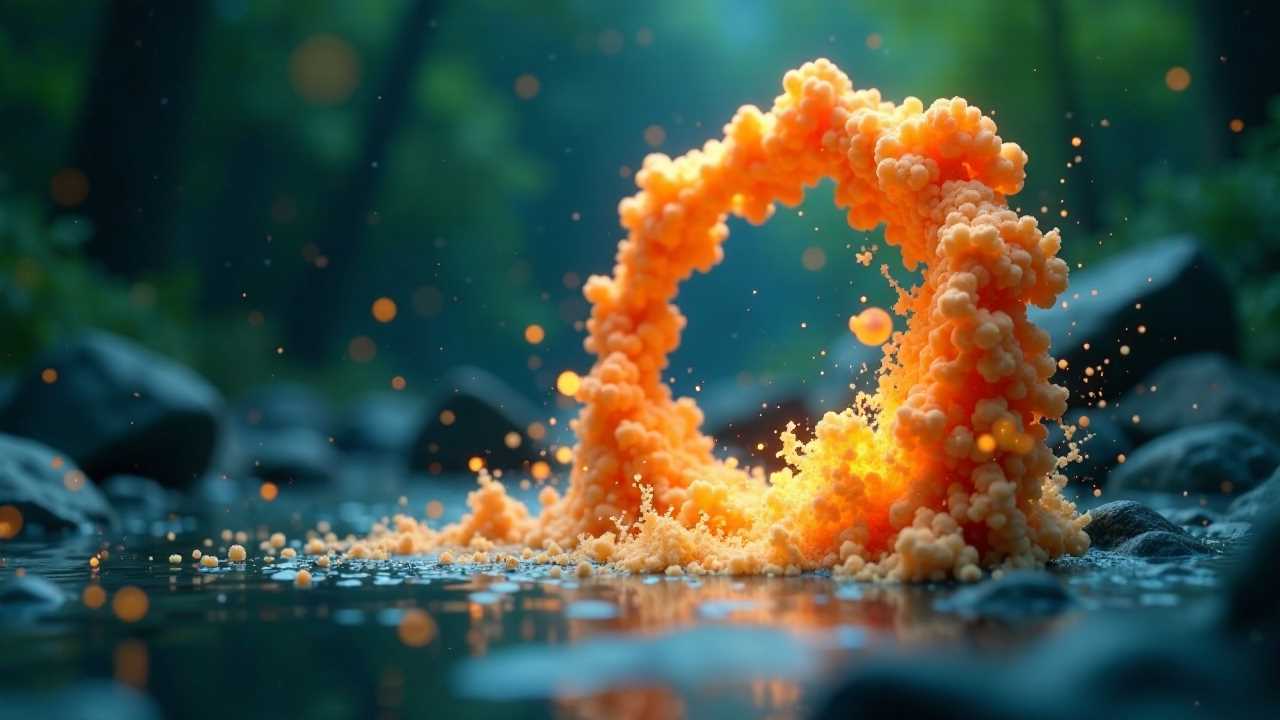
Understanding Particle Effects in 3D Animation
In the realm of 3D animation, particle effects serve as a vital tool for creating visually stunning and dynamic scenes. These effects can transform ordinary animations into captivating visual experiences. By simulating natural phenomena such as smoke, fire, rain, and explosions, particle effects add depth and realism to animations. Our exploration will cover the intricacies of particle simulation, the principles of visual dynamics, and effective rendering techniques that can elevate your motion design projects.
The Fundamentals of Particle Simulation
Particle simulation is the process of generating a large number of small entities, or particles, that behave according to physical laws. Each particle can represent a tiny part of a larger effect, such as a droplet of water or a speck of dust. The behavior of these particles is influenced by various forces, including gravity, wind, and turbulence.
To achieve realistic particle effects, we must understand the parameters that govern particle behavior. These include:
- Emission Rate: This determines how many particles are generated over time. A higher emission rate can create denser effects, while a lower rate results in a more subtle appearance.
- Lifespan: Each particle has a lifespan that dictates how long it remains visible before disappearing. Adjusting this parameter can create effects ranging from fleeting sparks to persistent smoke trails.
- Velocity and Direction: The initial speed and direction of particles influence their movement. By manipulating these values, we can simulate various natural phenomena, such as the chaotic movement of fire or the gentle drift of snowflakes.
By mastering these fundamentals, we can create compelling particle simulations that enhance our animations.
Visual Dynamics: Crafting Engaging Scenes
Visual dynamics play a crucial role in capturing the audience's attention. This concept encompasses the movement, timing, and overall flow of visual elements within a scene. When integrating particle effects, it is essential to consider how these elements interact with the surrounding environment.
One effective technique is to use effects layering. This involves combining multiple particle effects to create a richer visual experience. For instance, layering smoke with sparks can simulate a fiery explosion, while adding rain particles can enhance a dramatic scene. By carefully orchestrating these layers, we can achieve a harmonious balance that draws viewers into the animation.
Another key aspect of visual dynamics is scene composition. The arrangement of elements within a frame can significantly impact the viewer's perception. When incorporating particle effects, consider the following:
- Focal Points: Use particle effects to guide the viewer's eye to specific areas of interest. For example, a burst of sparks can draw attention to a character's action.
- Depth and Perspective: Incorporating particles at varying distances can create a sense of depth. Foreground particles can enhance the three-dimensionality of a scene, making it feel more immersive.
- Color and Contrast: The color of particle effects should complement the overall color palette of the scene. High contrast between particles and the background can make effects stand out, while subtle hues can create a more integrated look.
By paying attention to these elements, we can craft animations that are not only visually appealing but also engaging and memorable.
Rendering Techniques for Stunning Visuals
The final step in creating breathtaking particle effects is the rendering process. Rendering techniques determine how particle effects are visualized in the final output. Here are some essential considerations:
- Shading and Lighting: Proper shading and lighting can dramatically affect the appearance of particles. Using dynamic lighting can create realistic shadows and highlights, making particles appear more lifelike. Experiment with different light sources to see how they interact with your particle effects.
- Texture and Material: Applying textures to particles can add realism. For instance, using a soft texture for smoke or a shiny texture for sparks can enhance the visual quality of the effects.
- Post-Processing Effects: After rendering, applying post-processing effects such as bloom, motion blur, and depth of field can further enhance the visual appeal of particle effects. These techniques can create a polished look that elevates the overall quality of the animation.
By mastering these rendering techniques, we can ensure that our particle effects not only look good in isolation but also integrate seamlessly into the broader animation.
Bringing It All Together
Mastering particle effects in 3D animation requires a comprehensive understanding of particle simulation, visual dynamics, and effective rendering techniques. By focusing on these areas, we can create animations that are not only visually stunning but also engaging and immersive.
As we continue to refine our skills in motion design, let us remember the power of particle effects to transform our animations into captivating visual narratives. With practice and experimentation, we can push the boundaries of what is possible in 3D animation, creating experiences that resonate with audiences and leave a lasting impression.
 Digital Art InstructionDIY Infographics DesignMobile Game ArtworkPersonalized Logo Design3D AnimationeBook Covers DesignPrivacy PolicyTerms And Conditions
Digital Art InstructionDIY Infographics DesignMobile Game ArtworkPersonalized Logo Design3D AnimationeBook Covers DesignPrivacy PolicyTerms And Conditions
